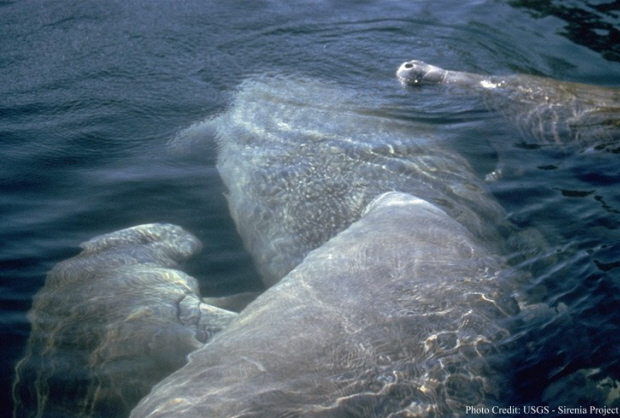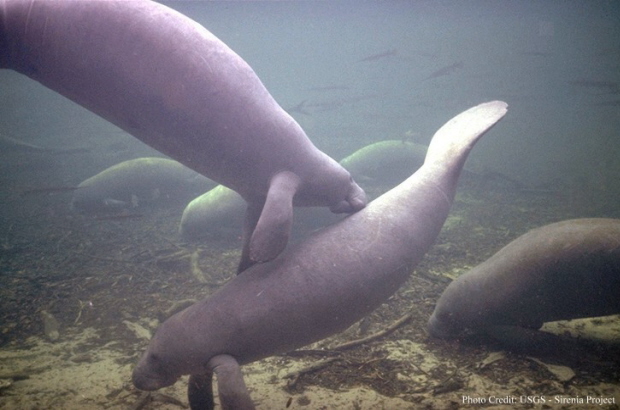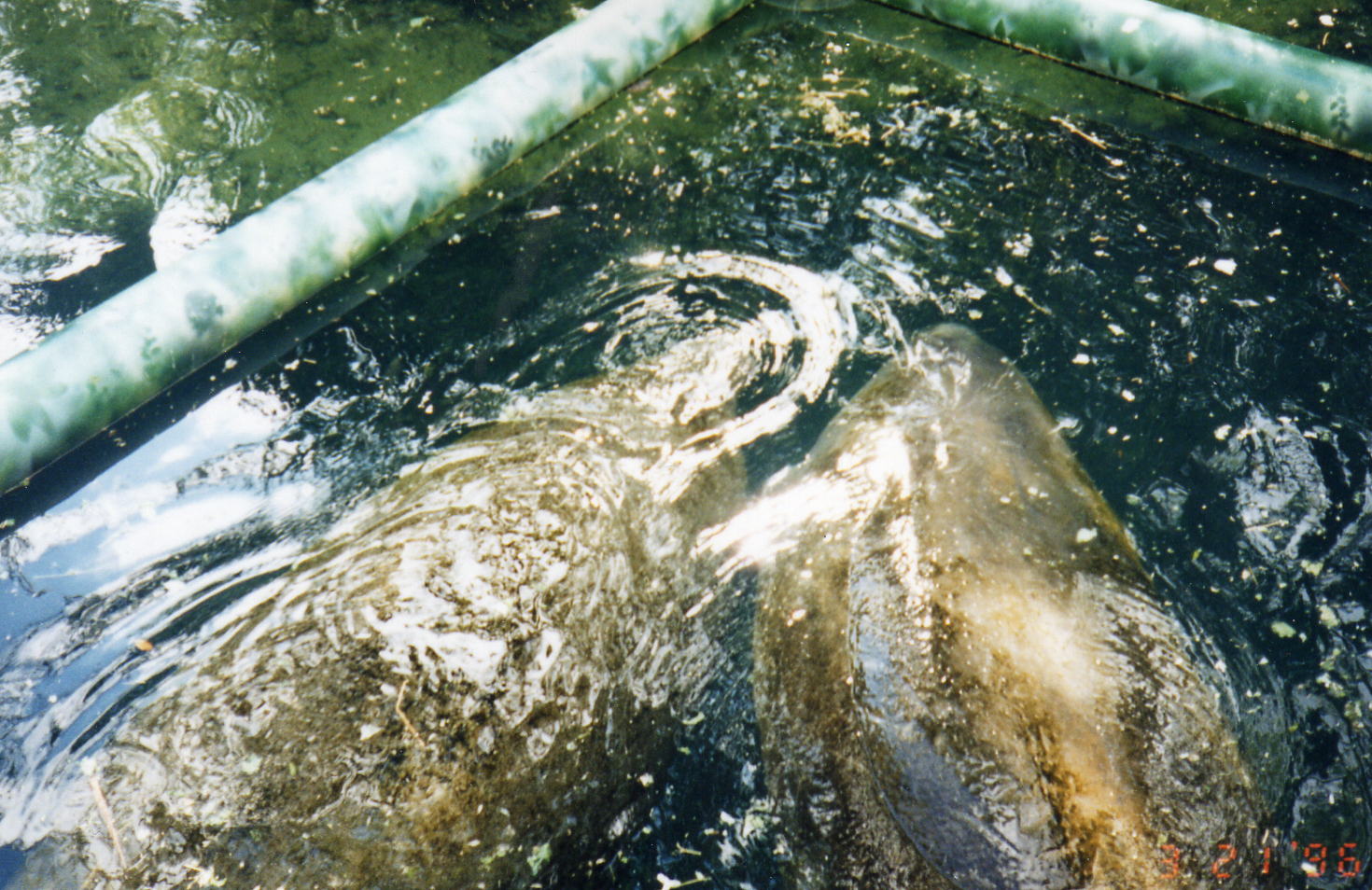
 West
Indian Manatees are non-territorial and do not form stable, close social groups or herds. They are seen most
commonly in
groups of two or more. Sightings of lone animals
are seen more frequently than any other single group size. The only long
term social bond is between a mother and her calf. West
Indian Manatees are non-territorial and do not form stable, close social groups or herds. They are seen most
commonly in
groups of two or more. Sightings of lone animals
are seen more frequently than any other single group size. The only long
term social bond is between a mother and her calf.
 West
Indian Manatees have no natural predators. They have casual or
opportunistic associations with little blue herons, Florida caerulea,
and symbiotic associations with several fishes. West Indian
Manatee serve as hosts
to numerous endoparasites and several ectoparasites. The most
important causal relationship that manatees have with another species is
with Humans. Although the manatees are infected with several species
of endoparasites these normally do not seriously affect the health of
the animals. West
Indian Manatees have no natural predators. They have casual or
opportunistic associations with little blue herons, Florida caerulea,
and symbiotic associations with several fishes. West Indian
Manatee serve as hosts
to numerous endoparasites and several ectoparasites. The most
important causal relationship that manatees have with another species is
with Humans. Although the manatees are infected with several species
of endoparasites these normally do not seriously affect the health of
the animals.
 The
West Indian Manatee
emit sounds underwater for communication with one another. They may
produce vocalization while expressing fear, anger or even sexual
arousal. They are commonly used to maintain contact with one
another while feeding or traveling. Most common vocalizations are
between a female manatee and her calf. The sounds can be
described as chirps, and squeaks that are produced in the larynx.
These sounds can be heard by humans. The
West Indian Manatee
emit sounds underwater for communication with one another. They may
produce vocalization while expressing fear, anger or even sexual
arousal. They are commonly used to maintain contact with one
another while feeding or traveling. Most common vocalizations are
between a female manatee and her calf. The sounds can be
described as chirps, and squeaks that are produced in the larynx.
These sounds can be heard by humans.

|